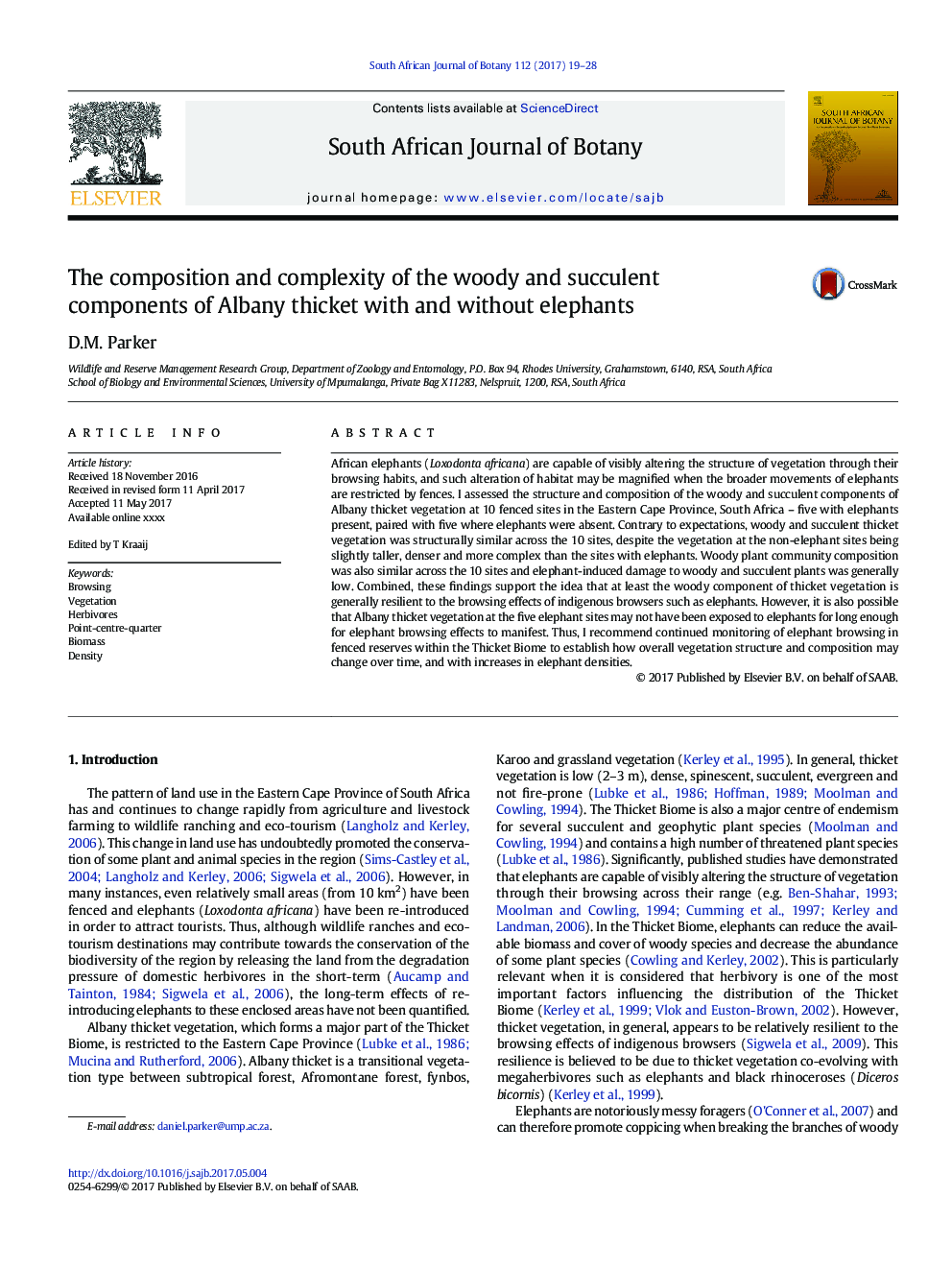| Article ID | Journal | Published Year | Pages | File Type |
|---|---|---|---|---|
| 5763160 | South African Journal of Botany | 2017 | 10 Pages |
Abstract
African elephants (Loxodonta africana) are capable of visibly altering the structure of vegetation through their browsing habits, and such alteration of habitat may be magnified when the broader movements of elephants are restricted by fences. I assessed the structure and composition of the woody and succulent components of Albany thicket vegetation at 10 fenced sites in the Eastern Cape Province, South Africa - five with elephants present, paired with five where elephants were absent. Contrary to expectations, woody and succulent thicket vegetation was structurally similar across the 10 sites, despite the vegetation at the non-elephant sites being slightly taller, denser and more complex than the sites with elephants. Woody plant community composition was also similar across the 10 sites and elephant-induced damage to woody and succulent plants was generally low. Combined, these findings support the idea that at least the woody component of thicket vegetation is generally resilient to the browsing effects of indigenous browsers such as elephants. However, it is also possible that Albany thicket vegetation at the five elephant sites may not have been exposed to elephants for long enough for elephant browsing effects to manifest. Thus, I recommend continued monitoring of elephant browsing in fenced reserves within the Thicket Biome to establish how overall vegetation structure and composition may change over time, and with increases in elephant densities.
Related Topics
Life Sciences
Agricultural and Biological Sciences
Agronomy and Crop Science
Authors
D.M. Parker,
